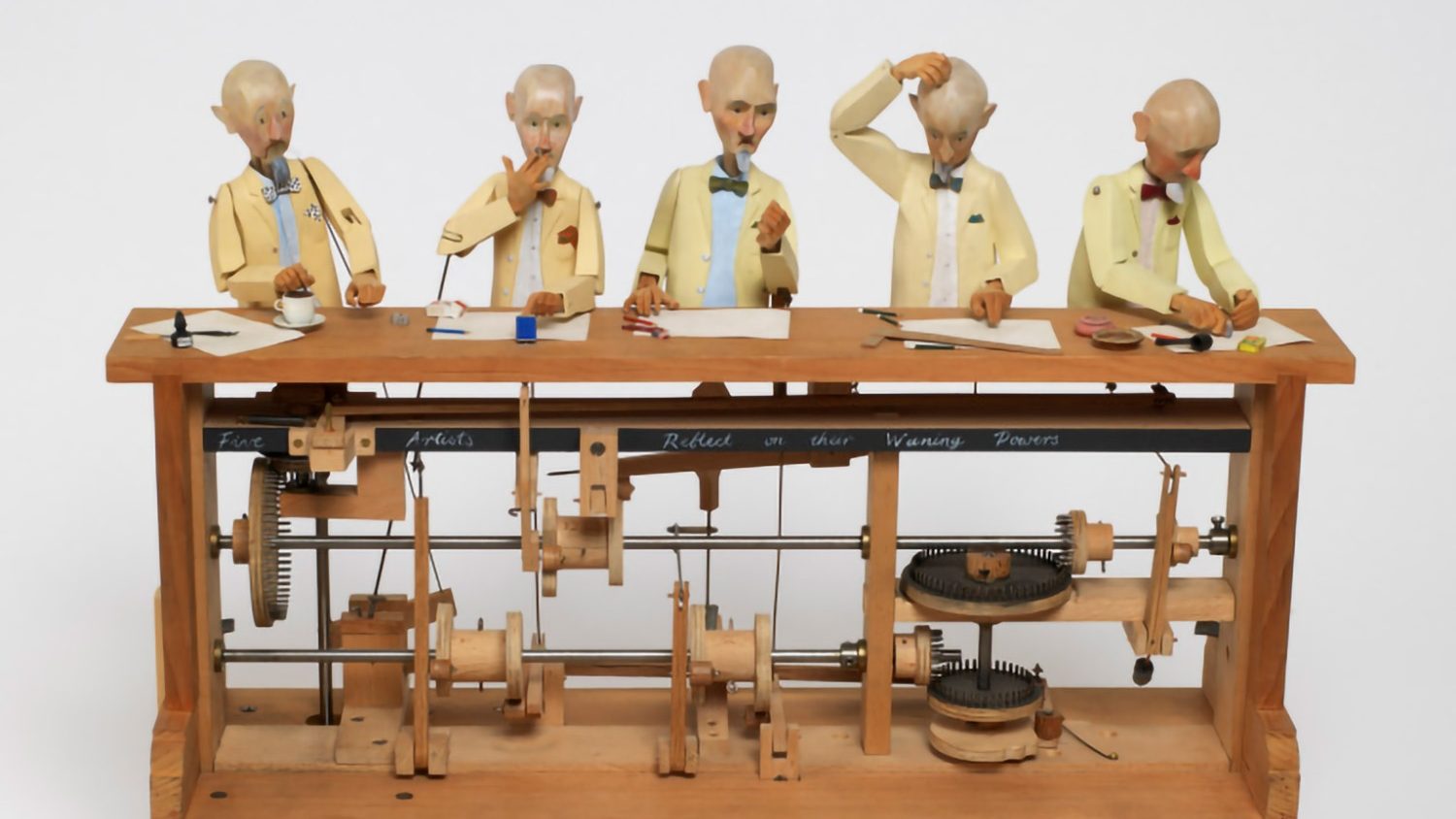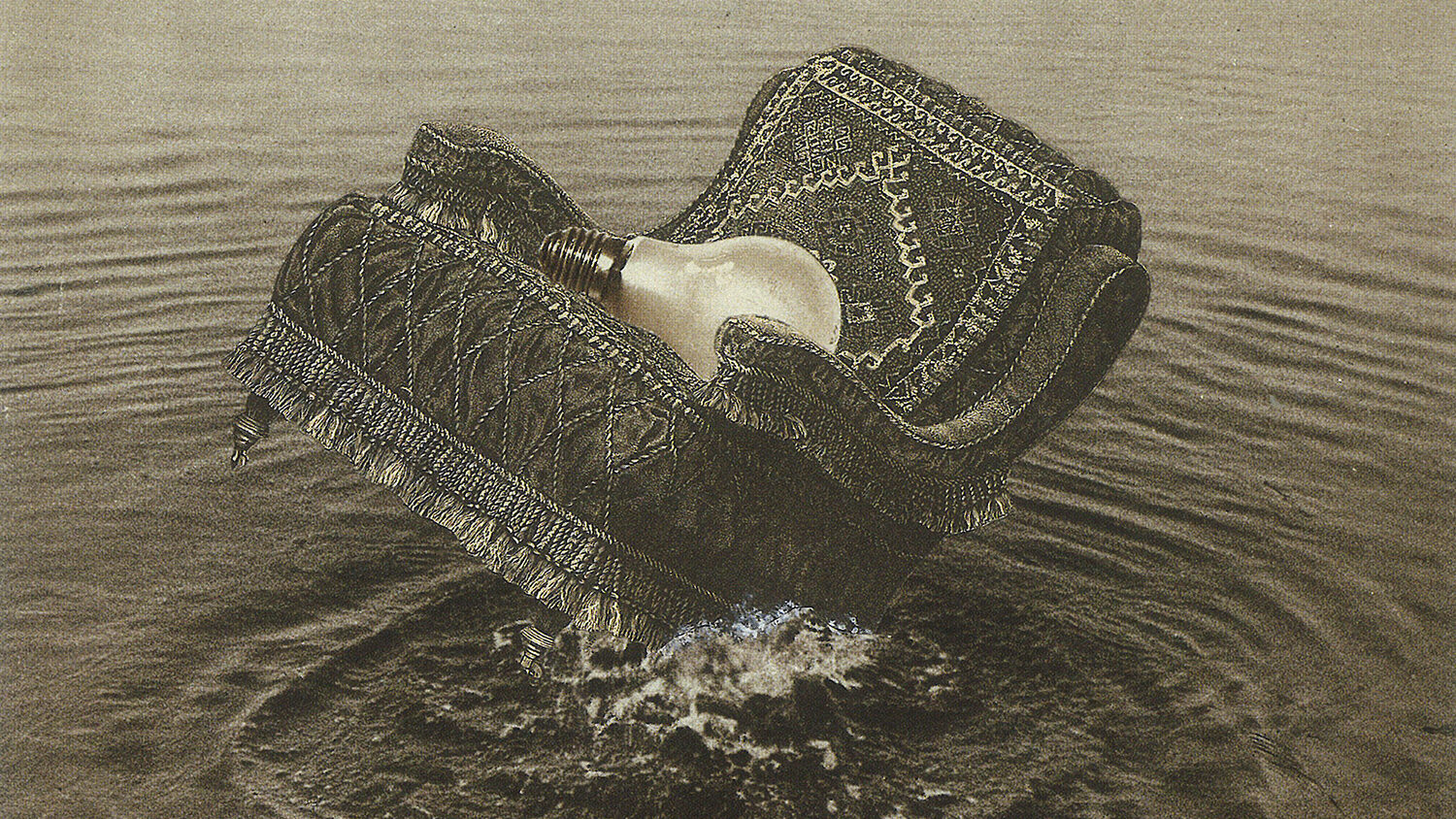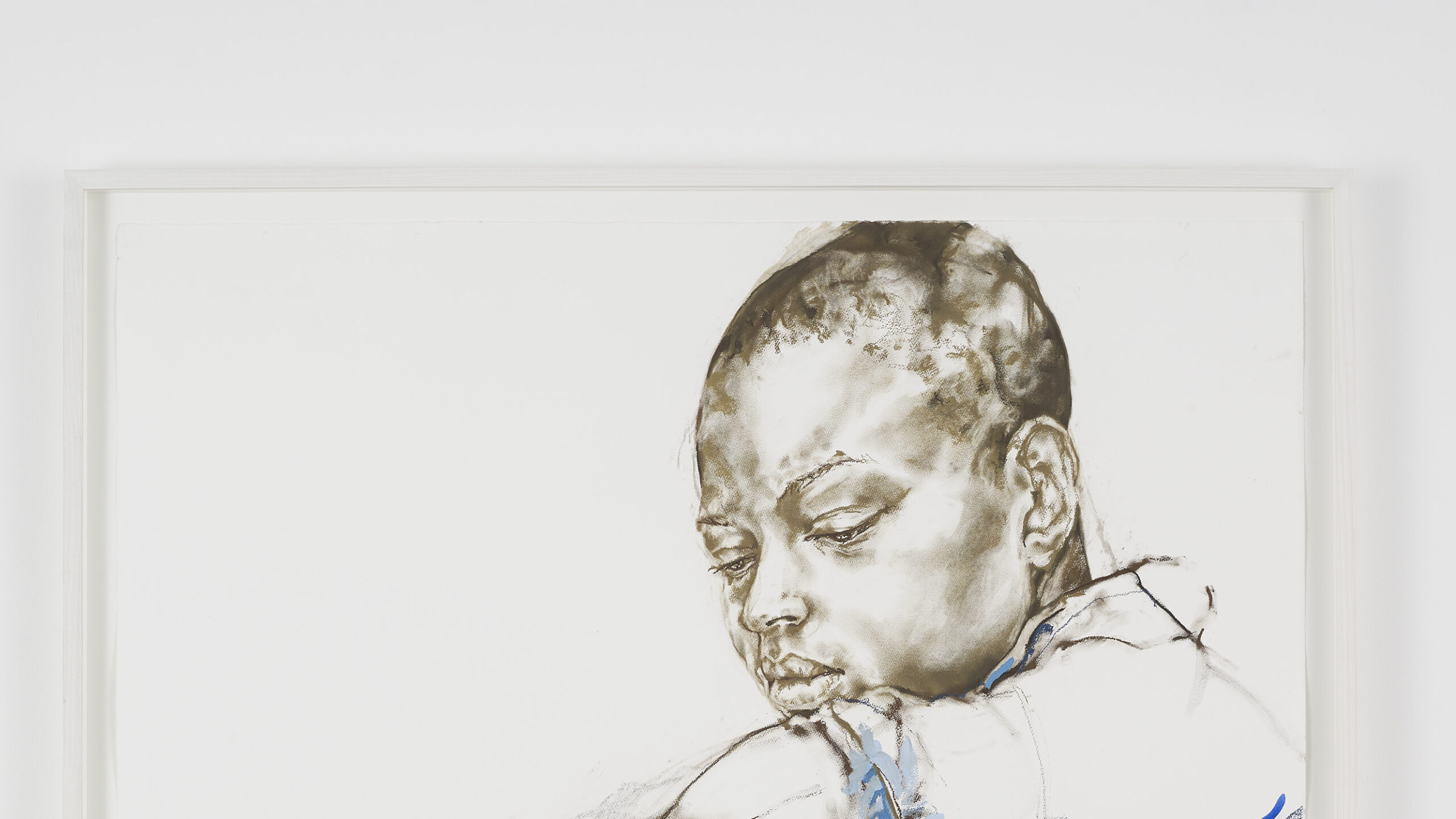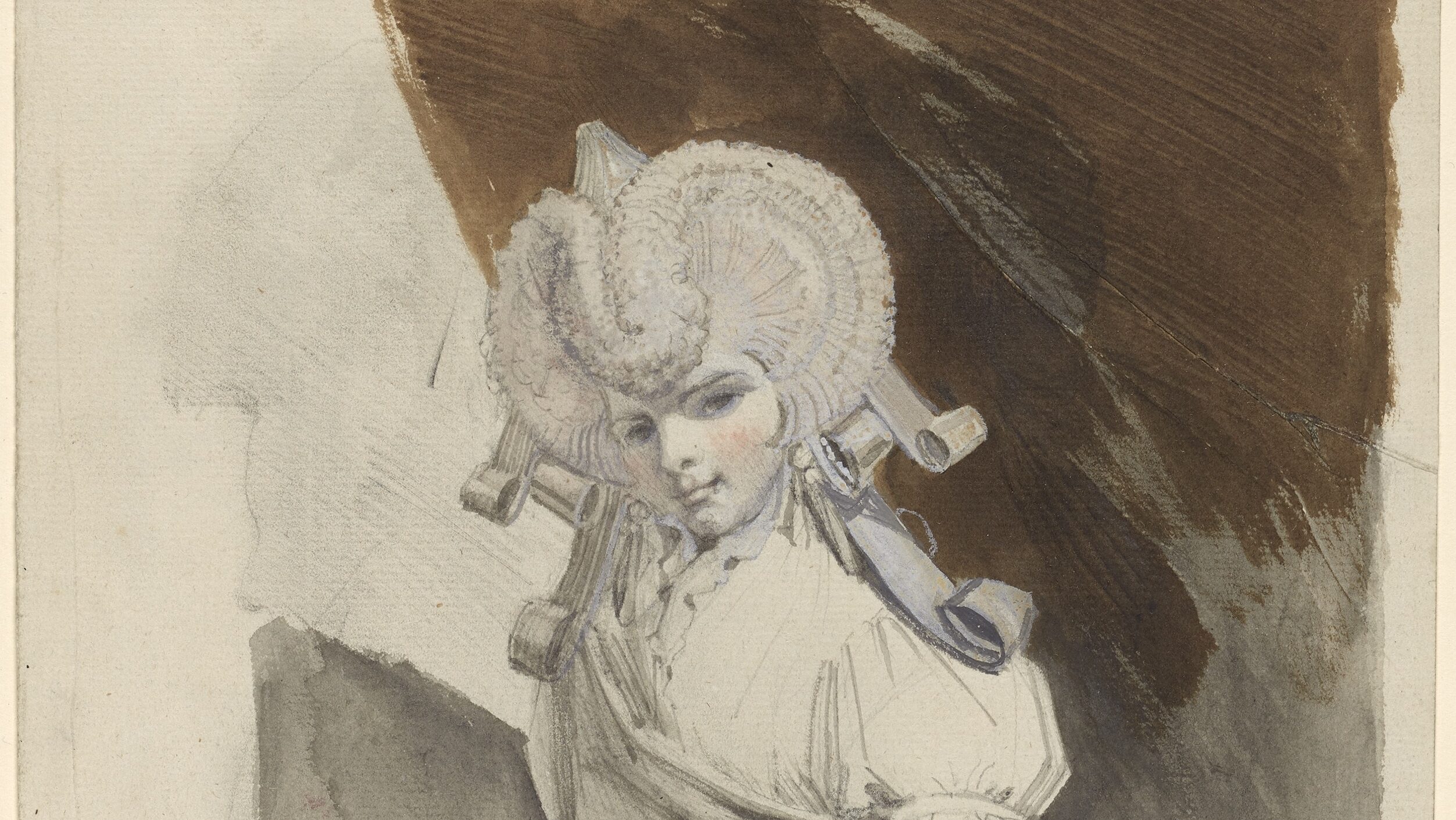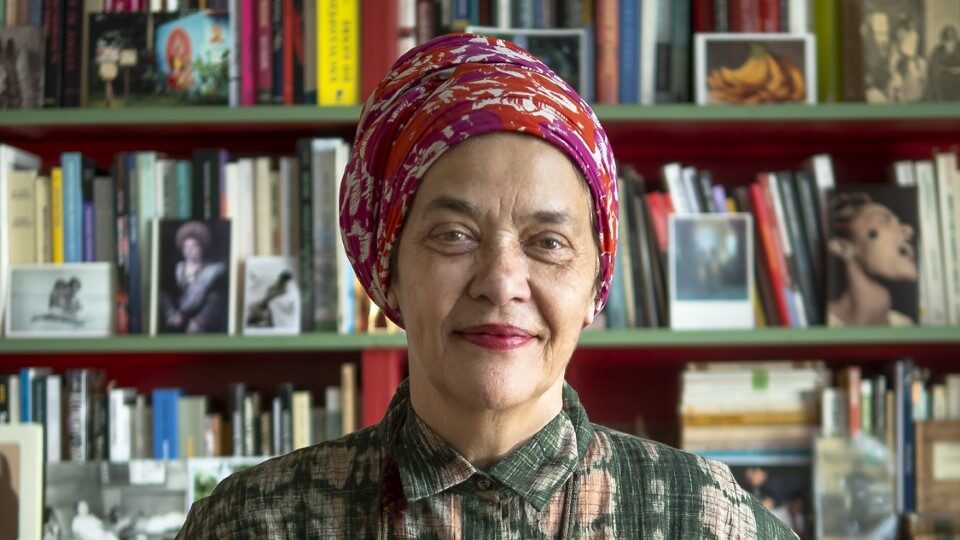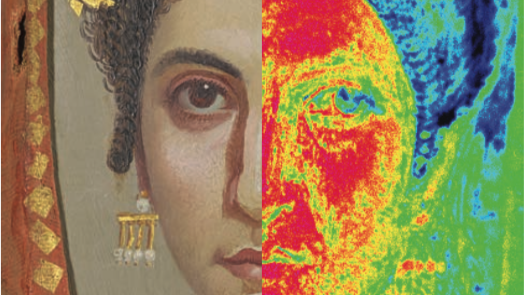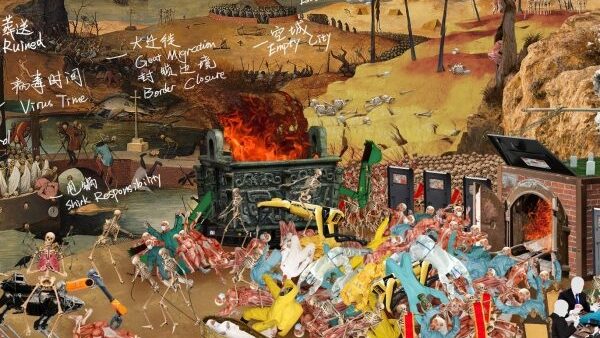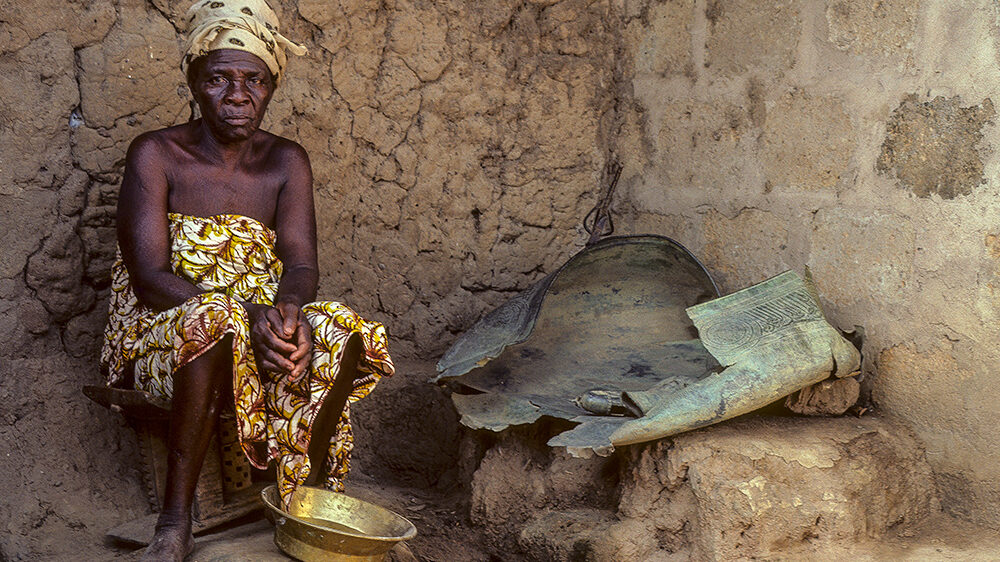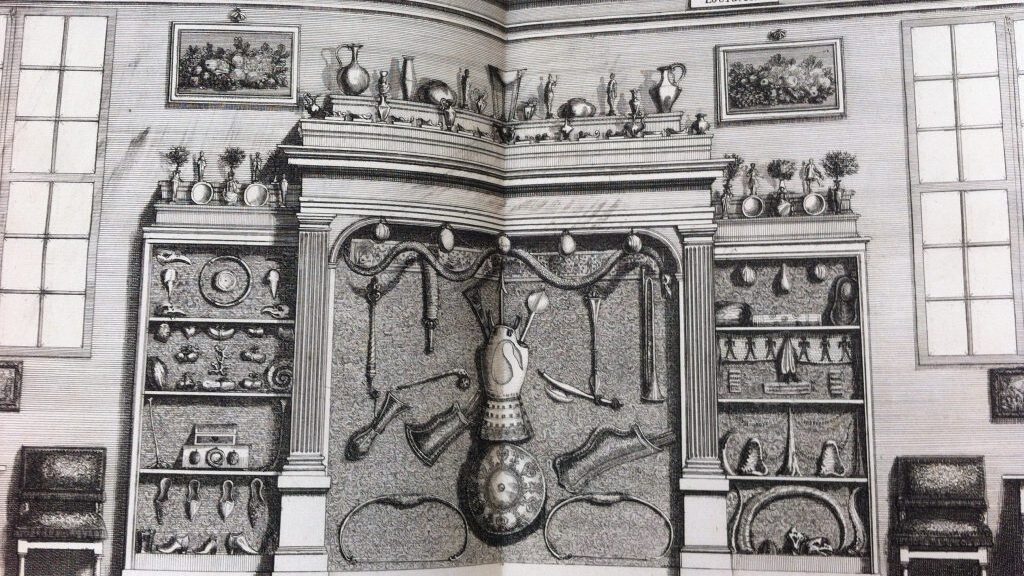In analyzing the constant change and renewal of cities, architectural and urban historians have predominantly taken the vantage point of the governing elites and looked at urban developments as manifestations of power. More attention needs to be paid to practices and visual manifestations of discontent, resistance and protest within the urban environment. The urban fabric is made of spaces defined by successive authorities as well as manifestations of resistance, both in the margins and in the centre of the city. Beyond propaganda and the visual and artistic language promoted by established authorities, beyond utopian discourses on imaginary cities, this series of lectures examines how representations of protest disrupt the notions of space produced by the elites. Iconoclasm, satire, graffiti, disruptive behaviour and sounds, provocative clothes or hairstyles reveal an urban geography marked by visible, if often ephemeral, acts of creative reaction against a given order and its symbols. Over the centuries and across national boundaries, “counter-cultures” have taken innumerable forms, ranging from collective actions to art, fashion and music. The speakers will look at such manifestations and ask how they shaped the urban space, inscribing it with dense webs of meaning. Marginal spaces, virtual or material boundaries, squares and markets offer potential venues for displaying an active reaction against the vision of orderly space promoted by the authorities. We hope this approach will encourage a fruitful encounter between art historians and architectural historians, cultural historians and anthropologists.
The 2017 Series was organised by Dr Guido Rebecchini (The Courtauld)and Professor Filippo De Vivo (Birkbeck, University of London)
Protest on the Piazza: Early Modern Revolts and a few later ones
9th October 2017
Professor Peter Burke – University of Cambridge
One consequence of the ‘spatial turn’ in history and the social sciences is a growing interest in the location of protest. In the 21st century, its location in squares is impossible to miss. Was this true in early modern Europe as well? The revolt of Naples in 1647 is an obvious example that springs to mind, since it began on Piazza Mercato. All the same, this lecture will argue that squares were less important in this respect than they became after 1789, because the repertoire of protest changed, from armed revolt to – more or less – non-violent demonstrations.
Peter Burke is Emeritus Professor of Cultural History, University of Cambridge and Fellow of Emmanuel College. He is currently working on the history of knowledge in both the early modern and late modern periods.
City walls, piazze, hoods, flags, and bells: The Topography of Late Medieval Protest
6th November 2017
Professor Samuel Cohn – University of Glasgow
Despite their prejudices and ideological objectives, contemporary chronicles and surviving illustrations from the late Middle Ages fail to support models drawn by historians and social scientists (George Rudé, Charles Tilly, James C. Scott and others). By their reckoning, modern ‘repertories’ of popular revolt have been large-scale, city-wide, organized in advance, and deliberately scheduled. These rely on complex networks of recruitment that extend beyond neighbourhoods and families. By contrast, popular protest before the nineteenth century was topographically and organizationally the opposite. By concentrating on images and words from contemporary chronicles, this lecture will investigate popular insurrection during the fourteenth and fifteenth centuries. It will illustrate the ritualistic reliance on city-wide spaces and the importance of city-wide, even extramural, networks and organization by so-called ‘pre-modern’ rebels, who depended on visual and sonic devices for achieving their military and political objectives. That late medieval popular unrest was largely limited to neighbourhoods, parochially dependant on local groups, is a myth of twentieth-century social science. Even the French ‘Jacquerie’ of 1358 was not a ‘jacquerie’ as used in common parlance today: it was much more than an outburst of spontaneous, chaotic anger and violence.
Samuel Cohn is Professor of Medieval History at the University of Glasgow and a Honorary Fellow of the Institute for Advanced Studies in Humanities (University of Edinburgh) and the Royal Society of Edinburgh. Over the past sixteen years, he has focused on the history of popular unrest in late medieval and early modern Europe and on the history of disease and medicine. He has just completed a three-year Leverhulme ‘Major Research Fellowship’. His last book was Popular Protest in Late Medieval English Towns, Cambridge University Press, 2013. Currently, Epidemics: Hate and Compassion from the Plague of Athens to AIDS is in production (OUP).
From Graffiti to Riots: Contested Space in the Renaissance City
13th November 2017
Dr Maartje van Gelder – University of Amsterdam
Demonstrations, riots, and rebellions—but also graffiti, shouts, songs, and libellous placards—were part of a repertoire that the “disenfranchised masses” used to influence elite politics in the Renaissance and early modern city. Social historians have shown that premodern European political developments can no longer exclusively be attributed to a parade of kings, lords, and princes: ordinary people were integral to political dynamics. Yet remarkably enough Venice, one of Europe’s most densely populated, dynamic, and diverse cities, is missing from this narrative. In overviews of premodern urban revolts and political unrest, Venice is either left out or presented as the benchmark of stability. This lecture will ask why this reputation for stability continues to be so resilient.
This talk will focus on the most quintessential of Venetian spaces, Piazza San Marco: as Venice’s political and religious heart, the Piazza was the central space for governmental ritual. Protests during ceremonies have been deemed “largely incidental”, reinforcing Venice’s reputation for being immune to civic discord. Yet the Piazza was the ideal space for popular protests, ritual contestations, and riots. Although formally excluded from politics, this talk argues that ordinary Venetians used the Piazza’s public space to contest and influence elite politics.
Maartje van Gelder is lecturer in Early Modern History at the University of Amsterdam. She is the co-founder and director of the Amsterdam Centre for Urban History. Her research focuses on the social history of early modern politics and diplomacy. Recent publications include a co-edited volume on Cross-Cultural Diplomacy and Diplomatic Intermediaries in the Early Modern Mediterranean (2015) and “The People’s Prince. Popular Politics in Early Modern Venice”, forthcoming in The Journal of Modern History.
Protest in Movement: Marching in the Modern City
27th November 2017
Professor Ilaria Favretto – Kingston University
Marches have long been a key tool of protest used by a wide range of movements on both Left and Right. This lecture will look at the symbolic and strategic functions of marches in modern and contemporary collective action, their representations and iconic status in the public imagination. It will ask why, in the era of social media and ‘clicktivism’, or activism confined to online participation from the security and comfort of your home, protest actors still resort en masse to this form of action. The lecture will also consider continuities and changes. Marches, particularly those staged by political actors such as the trade unions, used to be a very disciplined and militaresque affair. However, since the late 1960s they have increasingly turned into colourful, noisy and messy performances. Just to mention a few examples, students, feminists, environmentalists, the global justice movement, post-2008 anti-austerity protesters, have made ample use of symbols and repertoires drawn on the Carnival tradition and pre-modern folk protest rituals. How does one explain this? Why, particularly after 2008, has collective action re-emerged in ways that are concurrently new and, also, so old?
Ilaria Favretto is Professor of Contemporary European History within the Faculty of Arts and Social Sciences at Kingston University. Her research focuses on protest and social movements in modern and contemporary Europe. Recent publications include: Protest, Popular Culture and Tradition in Modern and Contemporary Western European History (co-edited with Xabier Itcaina, Palgrave Studies in the History of Social Movements, 2017) and ‘Rough Music and Factory Protest in post-1945 Italy’, Past and Present, vol 228, no.1, August 2015. She has recently been awarded a Leverhulme Fellowship and, from January 2018 she will be on research leave to complete a cultural history of industrial conflict in twentieth century Italy.
What Punk does to Art History / What Art History does to Punk
4th December 2017
Professor Eric de Chassey – Director, INHA Paris
In the second half of the 1970s, punk rock became widespread all over Europe, with sounds, but also images, clothes and attitudes. Based on a constant refusal to inscribe itself inside the artistic world, punk nevertheless soon became something to collect. Even if punk objects and images were usually valued as documents to a music scene, this collecting was like a first step in acquiring an artistic status. Only recently did it appear that there was such a thing as punk art as such, but that, to remain faithful to the spirit of the movement one had to consider art objects and images that were not meant to be and were particularly poor in regard of the material standards that obtain for traditional art history. Approaching punk art through art historical methods can be fruitful – but only if one takes into account the contradictions that this entails.
Éric de Chassey is director of the French National Institute of Art History (INHA) and professor of Modern and Contemporary Art History at the École normale supérieure in Lyon, France. Between 2009 and 2015, he was Director of the French Academy in Rome – Villa Medici. He has published extensively on the arts and visual culture from the 20th and 21st centuries as well as curated numerous exhibitions, in France and the rest of the world.
The experience of light and darkness is central to all acts of vision, and informs the ways in which we represent, inhabit, and imagine the world. The 2016 Frank Davis Memorial Lecture Series explores the significance of light and darkness in making, viewing and thinking about visual and material cultures. Over five lectures, scholars and practitioners from different fields reflect on such issues as the potential and limits of light and darkness as artistic materials, and as a subject and method of enquiry for art historians; the significance of light or obscurity as social agents; the ritual functions and perceptual implications of darkness and luminosity in ceremonial settings; and the technical, aesthetic and methodological challenges of lighting design in environments for the display of art. Investigating the nexus between sensory, cultural and historical apprehension, these lectures expose how light and darkness affect bodily and intellectual experience, and contribute to a debate about their role in art history and related disciplines.
The 2016 Series was organised by Dr Tom Nickson (The Courtauld) and Dr Stefania Gerevini -(L. Bocconi University)
Light and colour; dark and shadow
11th October 2016
Professor Liz James – University of Sussex
Light and colour and the other side of the same coin, darkness and shadow, are all fundamental aspects of works of art in a practical way (can we see the work?), a formal fashion (what colours are used?) and conceptually (why these colours? Why this light or this lighting?). But they are also elements of the work of art that have tended to have a secondary place within the history of art. Through a discussion of Byzantine monumental mosaics, this lecture will consider some of the ways in which light, dark, colour and shade are all fundamental elements in the appearance, effectiveness and function of these images.
Liz James is Professor of Art History at the University of Sussex and a Byzantinist. She has been interested in light and colour for a long time, writing her doctoral thesis on colour in Byzantium. She has just finished writing a book about medieval mosaics (provisionally entitled ‘A short history of medieval mosaics’).
Solid Light, Dark Rooms
18th October 2016
Anthony McCall – Artist
Born St Paul’s Cray, England, in 1946. Lives and works in Manhattan.
McCall is known for his ‘solid-light’ installations, a series that he began in 1973 with “Line Describing a Cone,” in which a volumetric form composed of projected light slowly evolves in dark, three-dimensional space.
Occupying a space between sculpture, cinema and drawing, his work’s historical importance has been recognized in such exhibitions as “Into the Light: the Projected Image in American Art 1964-77,” Whitney Museum of American Art (2001-2); “The Expanded Screen: Actions and Installations of the Sixties and Seventies,” Museum Moderner Kunst, Vienna (2003-4); “The Expanded Eye,” Kunsthaus Zurich (2006); “Beyond Cinema: the Art of Projection,” Hamburger Bahnhof, Berlin (2006-7); and “The Cinema Effect: Illusion, Reality and the Projected Image,” Hirshhorn Museum, Washington DC (2008).
Attuned illuminations: On the cultural practices of illuminating spaces
22nd November 2016
Dr Mikkel Bille – Roskilde University
Light does more than simply illuminate spaces. It fills them with a tone; a ‘something’ that may seize us emotionally as an atmosphere. The use of light to create such atmospheres is however not simply a matter of universal aesthetics. Light is entangled in notions of class, style, security, intimacy, even morality that are at the very core of cultural analysis. While light has often been approached in terms of effect on biology, individual sensory organs and psyche, there are important insights to be gained by looking at the social life that light takes part in. For instance, light holds a central place in religious metaphors, but it may also be a highly ritualized and habitual way of dealing with the perils and joys of everyday life. This lecture will explore how light takes part in marking time, space and atmospheres, by exploring cultural practices and meanings of illumination in all its varieties of glow, shadow, luminance, and darkness. From the home to the street, from the amusement park to the church, light matters.
Associate Professor at the Department of People and Technology, Roskilde University, with a PhD in anthropology, material culture studies, from University College London (2009). He is member of The Young Academy under the Royal Danish Academy of Sciences and Letters. His current research centres on the cultural conceptualization and orchestrations of atmospheres through light in a time of energy saving technologies. Publications include articles such as Anthropology of Luminosity in Journal of Material Culture (2007), special issue of Emotion, Space and Society on ‘Staging Atmospheres’ (2015), and edited book Elements of Architecture (Routledge, 2016).
Searching for darkness: archaeological perspectives on cave use in prehistoric Ireland
29th November 2016
Dr Marion Dowd – I.T. Sligo
Throughout Irish prehistory human groups sought out caves for a variety of activities including burial, excarnation and as theatres in which to conduct religious rituals. Fundamental to all such rites was the interaction with darkness, whether focussed on the transition between the light outside and the darkness inside, or purposefully seeking out the deepest and darkest areas of caves. The changing boundaries between light and darkness was often perceived as symbolically significant, and marked with the construction of features or the deposition of human bones. Those areas of caves shrouded in complete blackness were used at times for ritual retreat and the placement of votive offerings. Entering the darkness of caves seems to have been a practice reserved for a very small number of individuals, journeys not appropriate for the general population. This lecture explores some of the ways prehistoric people interacted with and perceived caves – essentially containers of darkness.
Marion Dowd is Lecturer in Prehistoric Archaeology at the Institute of Technology, Sligo, Ireland. She specialises in the archaeology of Irish caves, and is particularly interested in the use of caves as sacred spaces in prehistory. She has directed numerous cave excavations and cave research projects in Ireland over the past two decades, and has lectured and published widely on the subject. Her first book ‘The Archaeology of Caves in Ireland’ (Oxbow Books, 2015) won the Tratman Award 2015 and the Current Archaeology Book of the Year 2016 award. Her second book, co-edited with Robert Hensey, ‘The Archaeology of Darkness’ (Oxbow Books, 2016), explores human interactions with darkness.
Seeing art in the best light
13th December 2016
Dr Malcolm Innes – Edinburgh Napier University
For the majority of gallery visitors, sight is the principal sense through which we can experience artworks. To facilitate good vision we need good lighting and light is therefore an essential element of the gallery environment. But the very light that activates our vision can also damage the precious exhibits we wish to see. Exhibition lighting itself therefore embodies the classic dichotomy at the heart of the museum, the competing roles of preservation and display.
It is everyday parlance to talk about seeing things in the best light, but in the museum environment, what is the best light? Light is a remarkable medium that can subtly alter our view of an artwork. Small changes between light sources can make a sunset seem sad, a stormy sea look friendly and a rosy complexion look sallow. Given that these changes could be deliberate or accidental, how can we know what is the ‘right light’?
Examples of good and bad lighting exist in every museum and this talk will explore a wide range of light and shadow effects with the aid of live interactive examples. The presenter will also discuss the role that the art and science of exhibition lighting plays in revealing and concealing the artwork in our galleries and how good lighting can aid both the interpretation of an artwork whilst maintaining excellent conservation standards.
Malcolm Innes’ deep fascination with the perception of brightness at conservation light levels was born out of 20 years designing lighting for clients such as National Galleries of Scotland, National Museums of Scotland and the V&A. His empirical experience from many years of illuminating sensitive exhibits has shown that there is often a disconnect between light meter measurements and the human visual experience of low light environments.
Now, working as a Reader in Design at Edinburgh Napier University, Malcolm is exploring his practical experience of lighting museums through design led experiments and research projects including creative uses for digital projection.
The 2015 Frank Davis Memorial Lecture Series brings together anthropologists and art historians for a ‘conversation’ about art and about the ways in which their respective disciplines have addressed its theory, practice and history.
The series makes no pretence of definiteness; the aim is rather to find places of conjunction where discussion of such broad issues as time, matter and practice can occur in a way that is mutually illuminating.
The lectures of Professors Nicholas Thomas and Tim Ingold will consider the role that contemporary art can play in the future development of a hermeneutics of art respectively in the museum and the academy.
Professor Richard Fardon and Professors Caroline Van Eck and Stijn Bussels take something more like a case-studies approach: the subjects of the colour red and of the motif of the Medusa’s head are respectively explored in the context of absence and of the untamed, or wild.
Finally, time is the problematic investigated by Professor Chris Pinney and Dr Satish Padyar, in photography and painting: consideration is given to questions of synchronicity, pace and anachronism.
The 2015 Series was organised by Professor Katie Scott (The Courtauld)
A Critique of the Natural Artefact: Anthropology, Art and Museology
13th October 2015
Professor Nicholas Thomas – Museum of Archaeology and Anthropology, University of Cambridge
In the late nineteenth and early twentieth centuries, studies of ‘primitive’ and ‘tribal’ arts were closely identified with museums and collecting; when the field re-emerged in the early 1970s it was inspired by ethnography and new theorisations of symbolic systems but relatively unconnected with the vast collections of Oceania, African and native American art in the galleries and stores of ethnography museums in Europe and elsewhere. The lecture reflects on the constitution of collections, and in particular on the artefact, proposing that the museum, in dialogue with contemporary art, again has the capacity to constitute a ‘method’, to empower interpretations of art objects and cross-cultural art histories.
Nicholas Thomas has written extensively on art, empire, and Pacific history, and curated exhibitions in Australia, New Zealand, and the UK, many in collaboration with contemporary artists. His early book, Entangled Objects (1991) influentially contributed to a revival of material culture studies; with Peter Brunt and other colleagues, he co-authored Art in Oceania: a new history (2012), which was awarded the Art Book Prize. Since 2006, he has been Director of the Museum of Archaeology and Anthropology in Cambridge, which was shortlisted for the Art Fund’s Museum of the Year Prize in 2013.
From the Grotesque to Outsider Art: Where Does Art History Stop, and Anthropology Begin?
20th October 2015
Professor Caroline Van Eck – Centre for the Arts in Society, University of Leiden and Dr Stijn Bussels – Centre for the Arts in Society, University of Leiden
Grotesque figuration is a constantly recurring phenomenon in Western art. Because of their roots in ancient Greek Herms and Dionysian ritual, grotesques are intimately linked to both the origins of art and the frenzy that threatens to overturn civilization. In the early modern period they literally question and undermine artistic and aesthetic autonomy, because they offer what may be called a paratextual discourse of parerga in which the wild, the playful, the obscene and the threatening are acted out in grotesque figuration that is represented in a process of continuous transformation in the margins of ‘real’, autonomous art. By the late 18th century grotesques had lost much of their power to fascinate or terrify, to become the epitome of ornament in the sense of a parergon, without function or meaning except to frame and to decorate in the same way that earrings or pearl necklaces do.
In their lecture Caroline Van Eck and Stijn Bussels will use the grotesques designed by the Antwerp artist Cornelis Bos c.1550 to show that such art forms are very interesting to reflect on the relation between anthropology and art history. They enable us to question the Kantian doctrine of aesthetic autonomy, and to develop an anthropological model, in which grotesques, like other varieties of outsider art, are shown to function as apotropaic images, made to deal with the threats posed to a community by the exotic, the bestial or the supernatural.
Stijn Bussels is Lecturer of art and theatre history at the University of Leiden. There, he directs the ERC starting grant ‘Elevated Minds. The Sublime in the Public Arts in Seventeenth-Century Paris and Amsterdam’ (2013-2018). His publications include a monograph on sixteenth-century joyous entries, Rhetoric, Performance and Power (Amsterdam-New York, 2012) and a monograph on Roman theories on naturalism, vividness and divine power The Animated Image (Berlin and Leiden, 2012).
Caroline van Eck is Professor of Art and Architecture to 1800 at the University of Leiden. From 2006 to 2011 she directed the NWO/VICI program ‘Art, Agency and Living Presence’, in which anthropological and rhetorical approaches to the attribution of life to art works were combined. Recent publications include ‘Grotesque Figuration in Rubens’s Designs for the Pompa Introïtus Ferdinandi’, in: A. Knaap and M. Putnam (réd.), Rubens’ Pompa Introïtus Ferdinandi (Turnhout: Brepols, 2014); ‘Art Works that Refuse to Behave: Agency, Excess and Material Presence in Canova and Manet’, New Literary History, October 2015; and Art, Agency and Living Presence: From the Animated Image to the Excessive Object (Berlin and Leiden, 2015).
African Red
3rd November 2015
Professor Richard Fardon FBA – Department of Anthropology and Sociology, SOAS
Richard Fardon will illustrate some propositions.
- Many African languages have a parsimonious basic colour terminology, including Chamba, a Nigerian language and culture he has worked on intensively, from which he borrows some of his examples. Chamba colour terms can be translated approximately as black/white and red/green contrastive pairs. Given only four terms, Chamba red (as an African red) has to cover more than European red typically does.
- Historic African symbolic systems draw on a colour triad (red/white/black) in relation both to ritual practice and to metaphoric expression. Of these three colour vehicles, ‘red’ transports the most ambiguous freight, notably through association with the shedding of blood.
- As a natural environment, West Africa is brightly colourful: in relation to red birds, the fire finch and fire-crowned bishop speak for themselves, similarly flowers, berries […].
- Few naturally occurring bright red materials lend themselves to ornament. Bird feathers are not so used as far as he is aware (a possibility demonstrated by Hawaiian feather garments), nor any bright coloured gem stones. This is not principled reluctance, bright red abrus seeds (abrus precatorius) encrust masks and figures.
- Like other pre-industrial colourists, Africans found permanent, brilliant reds difficult to source. Vegetable and mineral reds – camwood or clay derived, or copper alloys – produce brown-red colours.
- Also like other pre-industrial colourists, African consumers and artists over the long term were enthusiastic to acquire and use imported brightly coloured goods and tints.What might this juxtaposition of propositions tell us about the specific conditions under which a desire to amend absence is created?
Richard Fardon is a social anthropologist; his writings over the last thirty years have concerned anthropological theory or the ethnography of West Africa, or often the relationship between the two. Art has increasingly preoccupied his work of the last decade. This lecture draws some of its examples from: Column to Volume: formal innovation in Chamba statuary (with Christine Stelzig, Saffron Press 2005); Lela in Bali: history through ceremony in Cameroon (Berghahn 2006); Fusions: masquerades and thought-style east of the Niger-Benue confluence, West Africa (Saffron Press 2007); Central Nigeria Unmasked: Arts of the Benue River Valley (with Marla C. Berns & Sidney Littlefield Kasfir, The Fowler Museum at UCLA 2011); Tiger in an African Palace and other thoughts about identification and transformation (Langaa 2014). He is currently completing Learning from the Curse: Sembene’s Xala (drawn by Sènga la Rouge).
Ethnography is to Anthropology as Art History is to Arts Practice: A Provocation
10th November 2015
Professor Tim Ingold – Department of Anthropology, University of Aberdeen
There is much contemporary interest in the relation between contemporary art and ethnography, driven on both sides by a critique of the artistic and literary conventions, respectively, of the gallery and the book. Yet concerns have also been raised about whether the practices of art and ethnography can be successfully combined. These concerns have their roots in questions internal to each discipline, about the difference on the one hand between the practice and the history of art, and on the other between ethnography and anthropology. Tim Ingold will argue that ethnography’s affinities are with art history rather than art practice, and that precisely as practice differs from history in art, so anthropology differs from ethnography. He concludes that the speculative practice of anthropology with art, rather than the ethnographic and historical study of art, offers the best prospects for future inquiry.
Tim Ingold is Chair of Social Anthropology at the University of Aberdeen. He has carried out fieldwork among Saami and Finnish people in Lapland, and has written on environment, technology and social organisation in the circumpolar North, on animals in human society, and on human ecology and evolutionary theory. His more recent work explores environmental perception and skilled practice. Ingold’s current interests lie in the interface between anthropology, archaeology, art and architecture. His recent books include The Perception of the Environment (2000), Lines (2007), Being Alive (2011), Making (2013) and The Life of Lines (2015).
Fragonard and Time
1st December 2015
Dr Satish Padiyar – The Courtauld Institute of Art
This lecture is about the problem of time, and a certain artist’s measured response to it. Arguably, Jean-Honoré Fragonard (1732-1806) was a painter who was at odds with bourgeois late eighteenth-century notions of progressive time and historical and material progress. Satish Padiyar will be asking then, how does this artist mark time, and what is the time and the timing of his quasi-expressionist marks? What is the pace of a graphic and painterly practice which traverses, eventually, a new cultural notion of time as ‘revolutionary’ and Empire? This lecture seeks to inquire into the particular way with time in the distinctive oneiric and fast-paced world created by Fragonard.
Satish Padiyar is Senior Lecturer in the History of Art at The Courtauld Institute of Art, London. He is the author of Chains. David, Canova and the Fall of the Public Hero in Postrevolutionary France, as well as numerous articles and essays on eighteenth and nineteenth-century art in Europe. He is currently writing a monograph on Jean-Honoré Fragonard for Reaktion Books.
Performance and De-synchronization: Opening the Past in Contemporary Indian Photography
8th December 2015
Professor Christopher Pinney – Department of Anthropology, University College London
“…in South Asia, though the future may not always look open, the past rarely looks closed”
Nandy’s observation about the productivity of the past provides a frame to position several contemporary photographic practitioners who have performed representations through diverse idioms which have recently been termed “postdating”. Approaching work by Pushpamala N, Waswo X. Waswo, Olivier Culmann, Gauri Gill, Suresh Punjabi, Naresh Bhatia and Cop Shiva this talk explores deliberately belated copies and strategies of de-synchronization which split open the past, exploring an “evasive” doubled time, in order to complicate the future.
Christopher Pinney is Professor of Anthropology and Visual Culture at University College London. He is the author of Photography and Anthropology (Reaktion, 2011) and (together with the photographer Suresh Punjabi) Artisan Camera: Studio Photography from Central India (Tara Books 2013). He was awarded a Padma Shri by the Government of India in 2013.
The 2014 Frank Davis Memorial Lecture Series, Courtauld Professorial Lectures, provides an opportunity to highlight and celebrate the quality research of some of The Courtauld’s distinguished professors, and will include explorations of early and contemporary examples of globalisation; the populist dimension of postmodernism; Diderot’s writings and their relationship to questions of materiality, portraiture and the interior; how technical examinations of paintings can inform art historical analysis; and an analysis of William Morris’ printed fabrics. Videos of the lectures are available to view below.
Elite Art in an Age of Populism
7th October 2014
Professor Julian Stallabrass – The Courtauld
Postmodernism was characterised by a strong strain of populism that celebrated the tastes of ordinary people. Venturi and his collaborators celebrated the architecture and urban fabric of Las Vegas, for example. There remains a powerful trend to a branded, populist art in contemporary art. Yet this is different from the earlier version because museums have had increasingly to commercialise themselves, collecting has become more instrumental (driven by investment) and internationalised, and art work is increasingly seen on social media and is subject to public comment. If modernism was attached to the technologies of production (cars, planes, ocean liners) and postmodernism to the technologies of reproduction (TV and video), the new populist stage may see a synthesis of the two in networked computer technology. The elite now frame rather than manufacture what is popular, and elite culture is eroded as a result.
Globalisation Before Globalisation: “Magiciens de la Terre”?
21st October 2014
Professor Sarah Wilson (The Courtauld)
2014 is a year of significant birthdays: the 25th anniversary of Magiciens de la Terre at the Centre Georges Pompidou and the 20th anniversary of Jacques Derrida’s Archive Fever, originally a talk at The Courtauld Institute of Art which Sarah Wilson hosted. The 30th anniversary of Jean-Francois Lyotard’s Les Immatériaux at the Pompidou is celebrated one year early in Dusseldorf. Professorial lectures must look back and of course look forward. Looking back one notes the remarkable change in the modern and contemporary curriculum over the past decades as regards methods and theories as well as geographical expansions of The Courtauld’s remit and mission. And as an afficionado and disciple of the School of Paris , Sarah Wilson considers its hospitality and discourse for artists from all over the world, before as well as after 1989 as vitally contemporary, when artists such as André Fougeron, Claude Parent and Carlo Cruz Diez star in this year’s Liverpool Biennale together with younger generations. Her continuing networking and conference project, Globalisation before globalisation: academies, avant-gardes, revolutions, has political as well as artistic dimensions, extending from Paris to the world-wide Comintern network, to the forthcoming first Asian biennale (China: Guangzhou) and back to Barbara Kruger’s superlatively democratic message for Magiciens de la Terre in 1989.
Material Matters: Looking Through Paintings
4th November 2014
Professor Aviva Burnstock (The Courtauld)
Technical and material examination of paintings can reveal aspects of artistic process and practice and highlight how images have changed. Thus technical evidence can inform historical interpretation of works of art and influence decisions about conservation and display. The lecture will highlight examples of paintings where technical examination has yielded important evidence about making, history and condition, and cases where interpretation is key.
Interior Fictions: Dressing-gowns and Shipwrecks in Diderot’s ‘Regrets’
18th November 2014
Professor Katie Scott (The Courtauld)
The subject of this lecture is an essay or short story by Denis Diderot, Regrets sur ma vieille robe de chambre, sometimes considered a digression in his Salon 1769, and one of the rare pieces of his writing on art published during his lifetime. Held together by an ironic narrative on the subject of gift giving, the essay raises questions about materiality, portraiture and the interior of a methodological, evidential, and interpretative kind. What is the relation between the sitter and the material world? Can we use fiction to better our understanding of the discourses on portraiture and the interior by moving beyond simple questions of true or false? Is the notion of the accessory or attribute and its relation to the subject sufficiently complex to account for the semantic role played by material objects in portraiture? Can fictional worlds help in the reconstruction of experiences in the historical past?
Dyeing, Bleaching, Printing: Morris and Abundance
2nd December 2014
Professor Caroline Arscott (The Courtauld)
William Morris addressed themes of nature’s abundance and envisioned integrated social systems that would allow all to access plenty. His understanding of beauty was linked to these ideas about the natural world and social organisation. This lecture looks at the way that colour and dyestuffs in the Morris & Co. printed fabrics contribute to the aesthetic effect and can be understood to have social significance. It looks at the multi-colour printing methods that were developed in the Morris & Co workshops. The lecture considers the poetics of the indigo discharge process by making reference to allegorical allusions to dyeing, bleaching and printing in William Morris’s own late romance The Water of the Wondrous Isles (1897).
The 2013 Frank Davis Memorial Lecture Series explores the intersection between art and vision science. More than fifty years after Gombrich’s pioneering Art and Illusion, the science of perception remains, for the most part, marginal to art historical practice, despite extraordinary recent advances in our understanding of the visual brain. In this series of five international lectures, leading vision scientists and art historians argue the case for a new engagement between art and science, in which scientific models of vision inform the theories and approaches of art history. The complex dynamics of perception, unlocked by contemporary vision science, contain implications for the study of art that are only now being realised.
The 2013 Series was organised by Tim Satterthwaite and Dr Meredith A Brown
Part-Whole Relationships in Art and Vision
8 October 2013
Johan Wagemans (Professor, Laboratory of Experimental Psychology, University of Leuven])
Visual Insights: What Art Can Tell Us About the Brain
22 October 2013
Margaret Livingstone (Professor, Department of Neurobiology, Harvard Medical School)
The Beholder’s Gaze: What Do Our Eyes Do When We Look at Paintings?
5 November 2013
Raphael Rosenberg (Professor, Department of Art History, University of Vienna)
Engulfed and in Motion: Some Notes on the Phenomenon of Perception in Contemporary Installation Art
19 November 2013
Regine Rapp (Co-Director and Curator, Art Laboratory Berlin)
Double Echo: Exploring the Resonance Between Art and Science
3 December 2013
Chris Drury (artist, UK)
The 2012 Frank Davis Memorial Lecture Series explores intersections between modernity and historicism worldwide. Spanning art, architecture and design across America, Europe and Asia from the nineteenth century to the present, each lecture demonstrates the allure and the value of the past in forming challenging responses to new circumstances. Interrogating the nature of revival, historicism and transnationalism, the series engages with nature and artifice, ritual and memory, and the flexible meanings of materials, images and structures that simultaneously inhabit traditional and innovative territory.
The 2012 Series was organised by Dr Ayla Lepine
Re-Inventing Landscape Traditions for the Present
Tuesday 9 October
Mark Cheetham (Professor, University of Toronto) and Mariele Neudecker (artist; and senior lecturer Bath Spa University)
Broken Pastoral and the English Folk: Art and Music in Britain, 1880-1914
Tuesday 23 October
Tim Barringer (Paul Mellon Professor of the History of Art, Yale University)
Orientalism and “Islamophilia”
Tuesday 20 November
Rémi Labrusse (Professor, Université de Paris Ouest – Nanterre)
The Dead Object of Public Statuary: Sculptural Iconographies of Colonial and Postcolonial Calcutta
Tuesday 27 November
Tapati Guha-Thakurta (Director and Professor in History, Centre for Studies in Social Sciences, Calcutta)
Ryoanji Garden as the Epitome of Zen Culture: The Process of Transnational Canon Formation
Tuesday 4 December
Toshio Watanabe (Professor, University of the Arts London; and Director, Research Centre for Transnational Art, Identity and Nation [TrAIN])
Two thousand manuscripts from the Old Royal library were presented to the British Museum by George II in 1757. About one hundred and fifty of the most richly illuminated will be displayed in a joint British Library/Courtauld Institute of Art exhibition, Royal Manuscripts: The Genius of Illumination at the British Library from 11 November 2011 to 13 March 2012. Taking this extraordinary collection as their starting point, the Frank Davis Memorial Lecture Series for 2011 will explore aspects of the patronage, manufacture, function and collection of books in medieval England and France, and will provide a broad context for these precious survivors of the library of the kings and queens of England.
The 2011 Series was organised by Professor John Lowden (The Courtauld)
The Earliest English Royal Books
11 October 2011
Professor Richard Gameson (University of Durham)
The Library and the Architecture of the Book: Manuscripts in the Secular World from 1400 to 1650
25 October 2011
Dr John Goodall (Architectural Editor, Country Life)
Makers of Royal Manuscripts: Court Artists in France and the Netherlands
8 November 2011
Dr Catherine Reynolds (Christie’s)
Script as Image
22 November 2011
Professor Jeffrey Hamburger (Harvard University)
England and France: Royal Libraries in the Later Middle Ages
6 December 2011
Dr Jenny Stratford (Royal Holloway College/Institute of Historical Research)
This series proposes a range of ways of approaching the specific resistance found in objects of enquiry, calling attention to the ways in which contemporary scholarship attends to the conditions that set up resistances with respect to disciplinary investigation. Distinguished scholars from different disciplinary traditions are invited to consider how the notion of resistance is dealt with in their field of research and reflect on the ways in which material and cultural factors inhibit or disturb smooth assimilation of artefacts and cultural activities into theory and predetermined categories of interpretation.
The 2010 Series was organised by Dr Francesco Lucchini
Interpretation Through the Looking-Glass
12 October 2010
Miguel Tamen (Professor, Director of Programme in Literary Theory, University of Lisbon; and Regular Visiting Professor, University of Chicago)
Traditions of Resistance: The Case of History
26 October 2010
Peter Burke (Emeritus Professor of Cultural History, University of Cambridge, and Fellow of Emmanuel College)
Art-Archaeology: The Materiality of Classical Art History
9 November 2010
Peter Stewart (Reader in Classical Art and its Heritage, and Acting Dean, The Courtauld Institute of Art)
Resisting Culture, Embracing Life: Anthropology Beyond Humanity
23 November 2010
Timothy Ingold (Professor of Social Anthropology and Head of the School of Social Science, University of Aberdeen)
Art History Unrealized
7 December 2010
Christopher Wood (Professor, Department of History of Art, Yale University)
Contemporary art has been radically transformed by globalisation. Biennials sprang up across the world from Korea to Senegal to Brazil, showcasing globalised contemporary art, and inculcating its values in diverse local situations. At the same time, that art was altered as artists from the ‘developing world’, particularly China, India, Latin American and Sub-Saharan Africa, rose to prominence on the global art scene. While much of the art that first came out of that transformation propagandised the virtues of globalization, new tensions have emerged, from the ‘war on terror’ to the financial crisis, which have led to a strongly documentary and politicised turn in art. In this series, prominent art historians, artists and theorists will examine this striking new configuration.
The 2009 Series was organised by Dr Julian Stallabrass and Professor Malcolm Bull in conjunction with their Research Forum/Andrew W Mellon Foundation M.A. Special Option in the History of Art on ‘Aestheticising Politics? The Political in Globalised Contemporary Art’.
Video against Globalization
20 October 2009
T J Demos (Reader, University College London)
World Art and Art World
27 October 2009
Malcolm Bull (Research Forum/Andrew W Mellon Foundation MA Visiting Professor from Ruskin School of Drawing and Fine Art, University of Oxford)
Performing Bare Life, Exploring Carceral Cultures
24 November 2009
Coco Fusco (interdisciplinary artist, writer and Director of Intermedia Initiatives, Parsons The New School for Design, New York)
Unconcerned But Not Indifferent
1 December 2009
Adam Broomberg and Oliver Chanarin (artists)
Everyday People
8 December 2009
Anne M Wagner (Class of 1936 Chair and Professor of Modern and Contemporary Art, University of California, Berkeley)
The 2008 Frank Davis Memorial Lecture Series continues the Research Forum’s examination of ‘Writing Art History’, exploring various ways of constructing art historical narratives, and the changing roles of art historians, critics and writers. The theme for this autumn’s lectures is ‘Off the Page’, and the series will feature an exciting range of speakers who have themselves made art history through performance, exhibitions, the internet, and television.
Slitting Open the Kantian Eye
28 October 2008
Dr Charlie Gere (Reader in New Media Research and Director of the Institute for Cultural Research, Lancaster University)
Performing Art History
11 November 2008
Andrea Fraser (Associate Professor, Department of Art, UCLA; and faculty, Whitney Museum of American Art Independent Study Program)
Looking at Faces: Re-viewing Joshua Reynolds’ The Marlborough Family (1777-9)
18 November 2008
Professor Mark Hallett (Department of History of Art, University of York)
Broadcasting Medieval Culture
25 November 2008
Dr Alixe Bovey (School of History, University of Kent)
The 2007 Frank Davis series addressed the changing role of the art historian across historical periods, and considers how art history incorporates a range of writings on art, from the novelist to the critic to the philosopher.
Aesthetics, Identity and Art History
16 October 2007
Amelia Jones (Pilkington Chair and Professor of Art History and Visual Studies, University of Manchester)
Art and Non-Art: the Conditions of Modern Realism
23 October 2007
Alex Potts (Professor and Chair, Department of History of Art, University of Michigan)
The Revenge of the Spiritual Medieval Art History After Theory
27 November 2007
Paul Crossley (Professor, Classical/Byzantine/Medieval Section, Courtauld Institute of Art)
Alois Riegl and Classical Archaeology
4 December 2007
Jaś Elsner (Humfry Payne Senior Research Fellow, Corpus Christi College, Oxford)
‘Disciplines Unbound’ was a series of lectures about undoing. Four prominent historians, critics and theorists of art reflect upon aggression, transgression, protest, derision and writing itself as modes of undoing traditions, disciplines, categories, media and methods. Patriarchy, history, the academy and the art world will all come undone.
The 2006 Series was organised by Mignon Nixon and Shulamith Behr
Marlene McCarty’s ‘Murder Girls’
17 October 2006
Maud Lavin (Professor, Visual and Critical Studies and Art History, Theory and Criticism, The School of the Art Institute of Chicago)
The Gestetner Revolution: The Hornsey Sit-In of 1968
7 November 2006
Lisa Tickner (Professor of Art History, Middlesex University)
Lawler’s Rude Museum
14 November 2006
Rosalyn Deutsche (Visiting Professor, Barnard College, New York)
The Sociological Image
5 December 2006
Janet Wolff (Professor of Performance, Screen and Visual Cultures, Centre for Interdisciplinary Research for the Arts (CIDRA), University of Manchester)
Artistic practices today engage time in a startling variety of modes. In these lectures, artists working in diverse media will talk about their own work and reflect on the ways in which art invites us to view time.
The 2005 Series was organised by Professor Paul Hills (The Courtauld)
1 November 2005
Jeremy Deller
8 November 2005
Jochen Gerz
22 November 2005
Richard Wentworth
29 November 2005
Timothy Hyman
13 December 2005
Cornelia Parker
The 2004 Series was organised by Deborah Cherry (Central St Martins College of Art and Design)
Pictures in the Chinese Encyclopaedia: Image, Category and Knowledge in Ming China
26 October 2004
Professor Craig Clunas (SOAS)
The Jesuit Infirmary Frescoes at S. Andrea al Quirinale in Rome: Traversing the Boundaries Between Catholic and Pagan, Real and Virtual
9 November 2004
Professor Gauvin Bailey (Clark University)
From Borders to Boundaries. Geography of Art in Post-1989 Europe
16 November 2004
Professor Piotr Piotrowski, Adama Mickiewicza University, Poznan
Inside Out: Anatomy, Medicine and the Boundaries of Nineteenth-Century Masculinity
23 November 2004
Professor Anthea Callen
The Moving Stare-Case: Velocities of the Image c.1900
30 November 2004
Professor Lynda Nead (Birkbeck College)
Sailing from Byzantium: A Greek Lectionary in Constantinople, Trebizond, Rome, and Florence
7 December 2004
Professor Robert Nelson (University of Chicago)
The theme of the 2003 Frank Davis Memorial Lectures, lasting from October to December, was entitled ‘Late Gothic in Europe. Connexions and Contrasts’. It was timed to coincide with the major international exhibition at the Victoria and Albert Museum in London from October 2003 to January 2004, ‘Gothic: Art for England 1400-1547’. The lectures were designed to offer a broad European perspective on English late Gothic art – hence their discussion of a variety of artistic media – including panel painting, stained glass and manuscript illumination – and their diversity of focus, from Burgundian court ceremonial to Christian-Jewish polemic, from English Perpendicular to the co-existence of Late Gothic and early Renaissance in Cracow.
The 2003 Series was organised by Professor Paul Crossley (The Courtauld)
‘Getting Medieval.’ The Making of the ‘Gothic: Art for England 1400-1547’ Exhibition
14 October 2003
Professor Richard Marks
The Impact of Burgundian Court Ceremonial and Habitus on Netherlandish Painting ca. 1450-1480
21 October 2003
Professor Robert Suckale
Fifteenth-century Stained Glass and Art at the Court of Charles VI and Charles VII. Stained Glass and the Other Arts: Resemblances and Dissimilarities
28 October 2003
Dr Brigitte Kurmann-Schwarz
The Survival of the Thirteenth-Century Cathedral in Late Gothic Art
4 November 2003
Professor Peter Kurmann
Gothic and Non-Gothic in Fifteenth-Century Cracow: the Chapel of the Holy Cross in Wawel Cathedral
11 November 2003
Dr Robert Maniura
Body v. Book: the Trope of Visibility in Images of Christian-Jewish Polemic
18 November 2003
Professor Jeffrey Hamburger
England, Europe and the Art of the Book, c.1399 to c.1547
25 November 2003
Professor Jonathan Alexander
Grünewald and the Isenheim Altarpiece
2 December 2003
Professor Christian Heck
The Divinity School at Oxford and the Grand Narrative of Perpendicular Architecture|
9 December 2003
Dr Christopher Wilson







